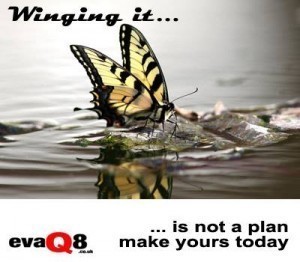 Phew! While there have been plenty of man-made ‘disasters’ of one sort or another this week at least there have been no major natural disasters and so I take leisure this Friday to delve a little deeper into the topic of ‘resilience’ as is one of the aims of this blog.
Phew! While there have been plenty of man-made ‘disasters’ of one sort or another this week at least there have been no major natural disasters and so I take leisure this Friday to delve a little deeper into the topic of ‘resilience’ as is one of the aims of this blog.
You might remember some of the main points I mentioned that play an important role in resilience: self-awareness, self-regulation, optimism, mental agility, character strengths, connections (read previous post).
You probably read through their descriptions and thought that it makes a lot of intuitive sense. In the context of the recent UK floods I then briefly discussed some aspects of optimism and I hope that if you personally were affected you did find some silver lining in it all. Before I pick upon the next strand however, one important question comes to mind. How can you tell that you are or will be resilient? To what extent is resilience innate? To what extent is resilience learnt? Let me begin by telling you a story.
Michael and Mary (a true resilience story)
… were born in the same place at the same time: 1955, the tropical island of Kauai, a paradise with lush rain forests, glorious mountains and pristine beaches at the northwest end of the Hawaiian Islands. Michael, a premature baby, spent his first three weeks in hospital, separated from his teenage mother. His father was absent with the military until Michael was two. By his eight birthday Michael had three younger siblings, his parents were divorced and his mother had left the island, breaking all family ties. Then there is the story of another child. Mary was born into poverty. Her father was an unskilled farm worker and her mother suffered from mental illness. Mary’s life between the ages of five and ten was one of repeated physical and emotional abuse, punctuated by her mother’s several hospitalisations.
Two children with the odds stacked against them.
And yet, by their eighteenth birthday both Michael and Mary were popular at school, possessed solid moral values and were optimistic about their futures.
Michael and Mary’s story is true although their names have been altered to protect their privacy. It is part of one of the first landmark studies into resilience by Emmy Werner and Ruth Smith who, a long time ago in 1955, began tracking 698 children from their pre-natal months to beyond their thirtieth birthday. Of course, a tremendous amount of research has taken place since. Importantly also, several ways of measuring and predicting resilience have emerged.
Now, before you rush off to measure your own resilience please note that it is a highly complex concept and no single measure is ever perfect. At best it can give an indication – a start, a baseline from where you can begin to explore resilience for yourself. It all begins with self-awareness – and a look at the ‘Resilience Scale’ website (Wagnild and Young) is one way of checking this out, free of charge. On their navigation bar look for ‘Test your Resilience’ and have a go. And in case you’d like to read more about Werner and Smith’s work, check out their book “Overcoming the Odds: High Risk Children from Birth to Adulthood“(1992)
Have a great weekend!
Monika
Tweet
Thank you for sharing, raising awareness for Resilience and Emergency Preparedness.
For more EVAQ8 blog simply use the right hand navigation. For emergency kits and practical resources use the top navigation. For FREE resources head over to our Preparedness Hub and find out why we use humour. If you like this post, please share it to help raise awareness for Emergency and Disaster Preparedness. Thank you!
Find EVAQ8 on social media, like and follow us!



 While the decor may be imaginary, what we talk about and share in here is very real and concerns us all:
While the decor may be imaginary, what we talk about and share in here is very real and concerns us all:


